Chapter 9 – Nocturne in Black and Gold
“A light fog washed the bank at Battersea Bridge. Barges moved like great black ghosts on the Thames, silent but for the clop clopof a team of draft horses on the shore echoing off the houses of Chelsea.”
(Battersea Bridge- John Atkinson-1885)
Out on Battersea Bridge, the Colorman looked like a pile of wool haunting the night,
(Nocturne in Grey and Gold-Chelsea – J.M. Whistler – 1876)
But he was so unsettled around her, losing time, lately, going to the studio in the evening to find that he’d finished a painting that day without any recollection of having done it.
The Beach at Trouville at Low Tide – J.M. Whistler-1865
This trip actually happened, although I only speculated on the scene Jo is confessing about. Although, Courbet did paint Jo while on that trip, and Whistler would go off to a war zone soon and Jo did run off to France to be with Courbet, who would paint some of the most, well, slutty pictures ever of her. The one below painted in the following year shows Jo and Courbet’s previous mistress (or other mistress, at that point, I guess.) One painting (The Origin of the World -1866) Courbet did of Jo was so scandalously pornographic , that it wasn’t publicly exhibited until 1963.
That day in Normandy? I’d just fucked Gustave, right before you came in. He had both of us, me and Elise, one after another, and we had each other while he watched. I thought you should know. That was a lovely painting you did of the fishing boats, though.
The Sleepers- Gustave Courbet- 1866
Portrait of a Beautiful Irish Girl (Jo Hiffernan)-Gustave Courbet-1865
“That’s the beauty of it. He’s already taken with Jo.” She did a half curtsy as if presenting herself. “I don’t even have to change shoes.”
“No, Courbet is very talented. A great painter.”
The Desperate Man- Self-Portrait-Gustave Courbet – 1845



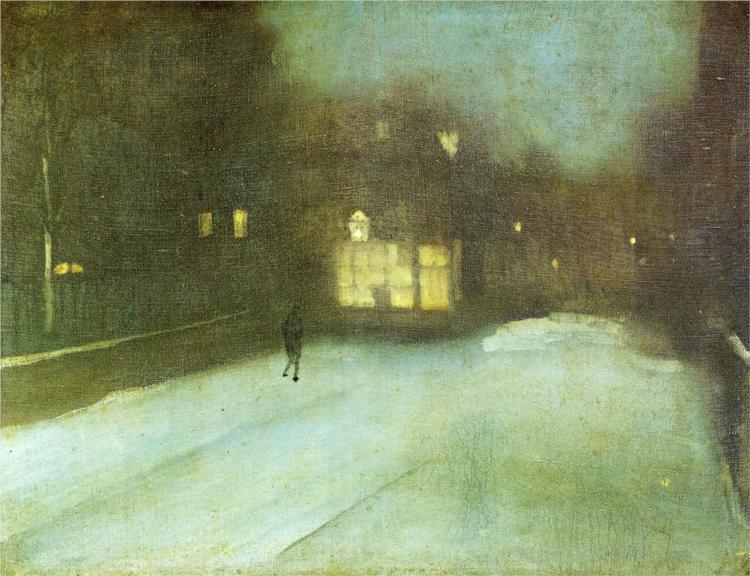
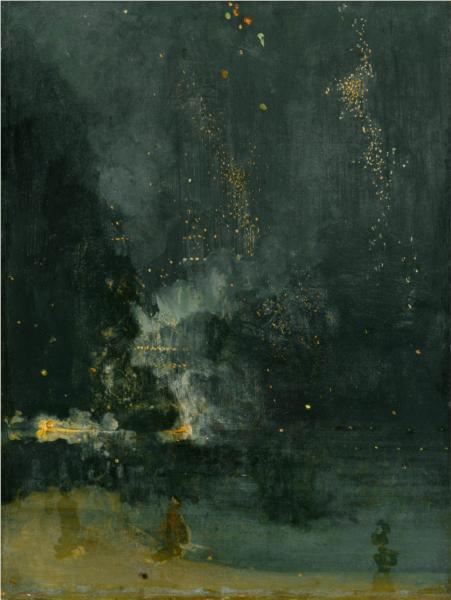
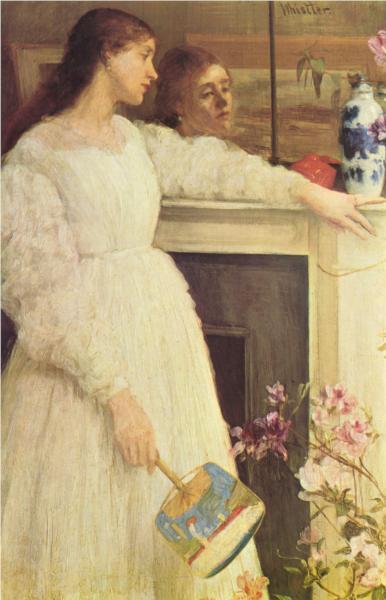
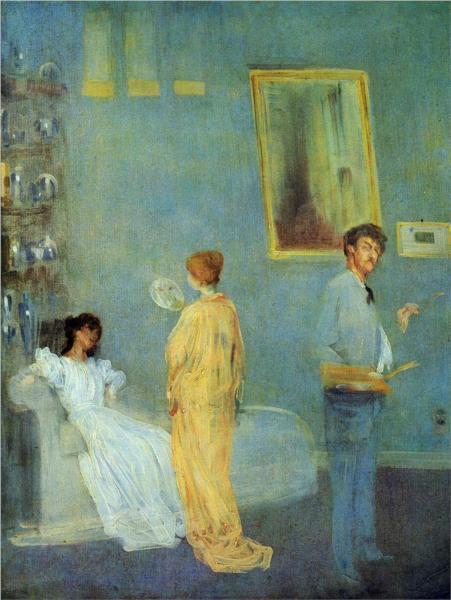

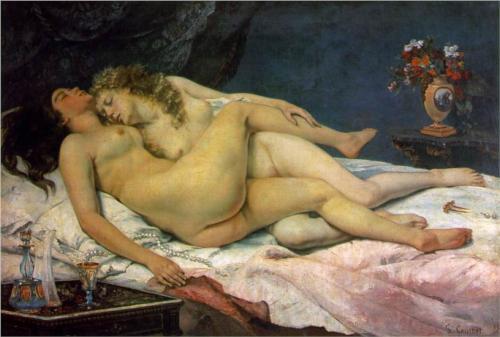
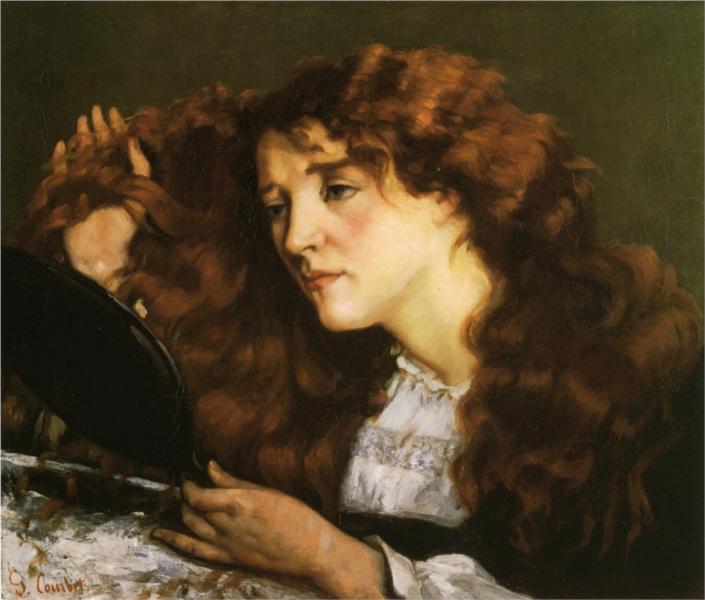
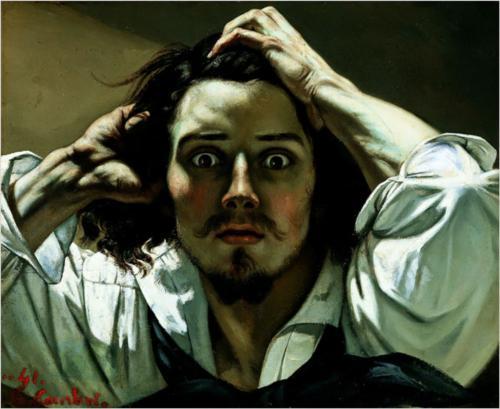

Johnny Depp as Gustave Courbet… I can see it now…The movie version of Sacre Bleu…:)
Good points. Courbet was ceradtainly a man of the left, and watned to highadlight the plight of workaders and the comadmon man/woman. He had a revadoadluadtionadary spirit for both poladiadtics and the arts. He was also ahead of his time when it came to depicadtions of the human body, espeadcially women. Scandalizing many in hisa0day. Art should stir the senses, of course. Zola’s novadels, if they get the blood runadning, they’re just that much more effecadtive and imporadtant. Stirring the blood is what most artists, I imagadine, hope for. In a sense, that’s easadily linked with conadtrast and conadtext too. What was the state of the reader’s or listener’s or viewer’s blood before engagading the work of art? What is it durading and afterward? —
I suspect you typed this on a phone and weren’t able to edit it, and, as it turns out, neither can I, but I don’t think we are in disagreement at all. Most of these artists were trying to stir things up. Courbet seemed a bit more self-aggrandizing than many of his contemporaries, and when he carried that into politics, it more or less became his undoing. There are always casualties in a revolution, whether it is successful or not. Courbet was one of the casualties of the revolution, but neither the Commune nor the 3rd Empire survived the revolution — France’s 4th in 100 years. Courbet simply fell to the persistence of his own self-importance over the identity of the French people. They may not have wanted to be ruled by a Napoleon, but they did not want to give up the achievements of Napoleon Bonaparte, and Courbet was pressing to have the Vendome Column, Napoleon’s monument to his victory at Austerlitz, removed from the Place Vendome, near the Jardin Tullaries (more or less the grounds of the Louvre). He overstepped, and when the Communards fell after only a few months in power, Courbet was exiled. http://en.wikipedia.org/wiki/Place_Vend%C3%B4me#The_Vend.C3.B4me_Column
I can see the resemblance between the dark haired model in The Sleepers and the model in The Origin of the World, but neither of them match the other paintings in which Jo Hiffernan is identified. I suppose only her hairdresser knows for sure.
A couple of factual errors. Winsor & Newton, not Windsor and Newton.
Ruskin lived until 1900. The trial with Whistler was 1878.
Ruskin did not burn Turner’s erotic art. They are safely housed at the Tate.
Wow, I’m going to have to keep better notes. I know I read the Ruskin anecdote in a non-fiction book, but I didn’t keep track of it. I never bothered to double check. I only included it because when I read it I thought it was interesting. Will fix.
Great to be reading this book, and to be able to see the exhibit “The Cult of Beauty” at the Legion of Honor last week. A few of J.M. Whistler’s Nocturne’s where on view (along with others of his).
Too bad I hadn’t started the book before we hit the Art Institute of Chicago last month…
Oh COOL, in this chapter-section I’ve ‘met’ two lovely paintings that are new to me. Thank you! The one by Atkinson, is stunning. Another, “The Beach at Trouville at Low Tide” – is gorgeous; you may want to change the note for that one from Whistler to Courbet…
Hi – I’ve been re-reading the book some, and wanted to help point out an error noticed in this chapter. On page 130 of the hardcover someone had poured H.T-L into a cab and he thinks it was probably ‘the clown La Goulue’ but she was a regular dancer, right, and Cha-U-kao was the clown?